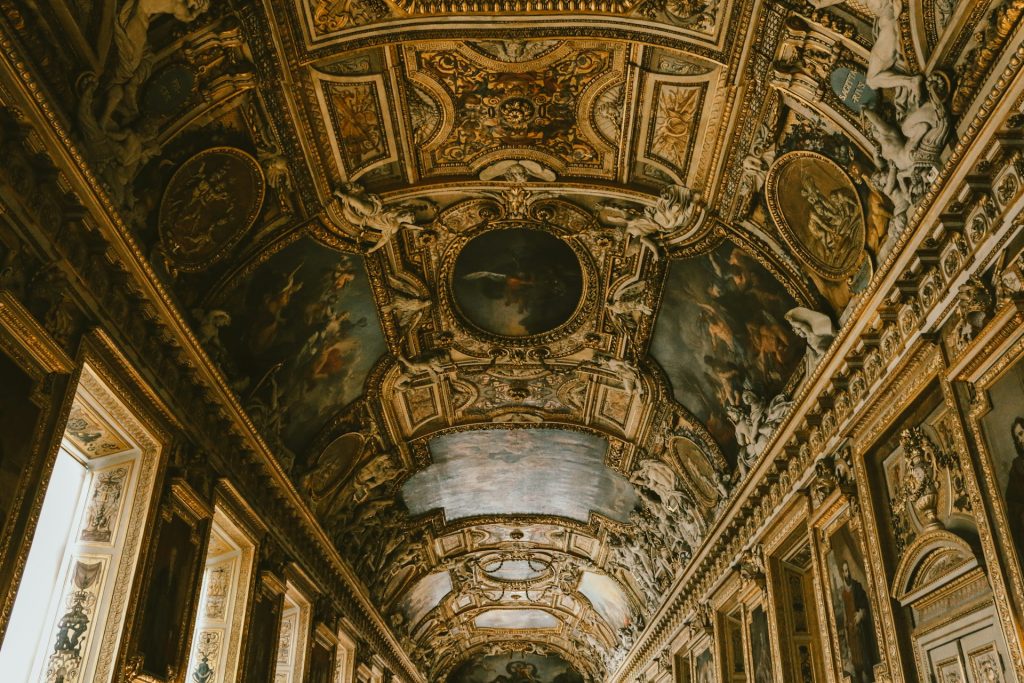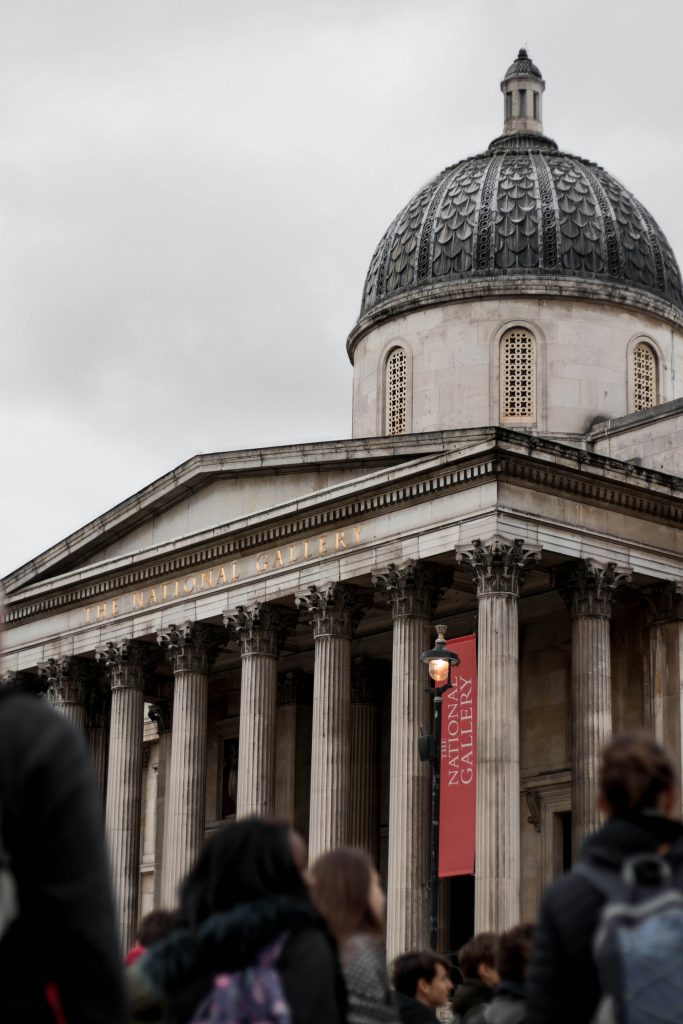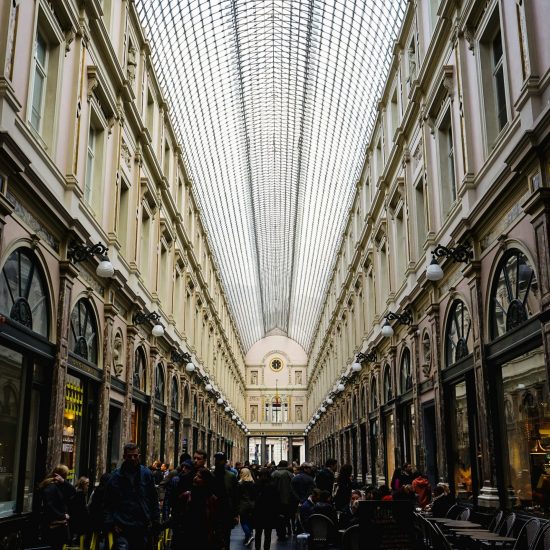Europe, the cradle of Western civilization, boasts a rich tapestry of history, culture, and art. Its art galleries house some of the world’s most significant collections, attracting millions of visitors annually. This article delves into the top art galleries in Europe, offering an insightful guide for art enthusiasts and travelers alike.
1. One of the most iconic Art Galleries in Europe: The Louvre, Paris

Source: https://unsplash.com/photos/brown-concrete-building-cbl1K6yJlDI
The Louvre, located in Paris, France, is arguably the most famous art gallery in the world. Originally built as a fortress in the late 12th century, it has transformed over the centuries into a royal palace and finally into the iconic museum it is today.
The Louvre is home to approximately 38,000 objects from prehistory to the 21st century, spanning an area of over 72,000 square meters. Its vast collection includes some of the most renowned artworks, such as Leonardo da Vinci’s “Mona Lisa,” the ancient Greek statue “Venus de Milo,” and Eugène Delacroix’s “Liberty Leading the People.” The diversity and historical significance of its collection make the Louvre an essential visit for any art lover.
Visitors can explore a variety of departments, including Near Eastern Antiquities, Islamic Art, Sculptures, Decorative Arts, and Paintings. Each wing of the museum offers a deep dive into different periods and regions, providing a comprehensive overview of human artistic achievement. With its iconic glass pyramid entrance designed by I. M. Pei, the Louvre combines historical grandeur with modern elegance.
2. A Renaissance Marvel in Europe: The Uffizi Art Galleries, Florence
The Uffizi Gallery in Florence, Italy, is one of the most important Italian museums and one of the largest and best known in the world. Housed in a historic building constructed in the 16th century by Giorgio Vasari, it was initially designed to accommodate the administrative and judiciary offices of Florence.
The Uffizi’s collection primarily focuses on the Italian Renaissance, featuring masterpieces by artists such as Botticelli, Michelangelo, Leonardo da Vinci, and Raphael. Sandro Botticelli’s “The Birth of Venus” and “Primavera” are among the highlights, drawing thousands of visitors eager to witness the beauty and elegance of these iconic paintings.
In addition to its Renaissance collection, the Uffizi also displays works from the Middle Ages to the Modern period, including Flemish, Dutch, and German paintings. The gallery’s unique layout, with its long corridors and rooms filled with natural light, creates a serene atmosphere perfect for appreciating the art. The Uffizi also offers stunning views of the Arno River and the historic Ponte Vecchio, enhancing the overall experience.
3. Spain’s Artistic Treasure Trove: The Prado Museum, Madrid
Madrid’s Prado Museum, officially known as the Museo Nacional del Prado, is Spain’s premier art gallery. Established in 1819, it is renowned for its extensive collection of European art dating from the 12th to the early 20th century.
The Prado’s collection features over 8,000 paintings, 1,000 sculptures, and numerous prints and drawings. It is particularly noted for its Spanish masterpieces, including works by Francisco Goya, Diego Velázquez, and El Greco. Velázquez’s “Las Meninas” and Goya’s “The Third of May 1808” are among the most celebrated pieces, offering profound insights into Spanish history and culture.
Besides Spanish art, the Prado also boasts significant collections of Italian and Flemish paintings, with notable works by Titian, Rubens, and Bosch. The museum’s neoclassical architecture, combined with its lush surrounding gardens, provides a picturesque setting for visitors. Regular temporary exhibitions and educational programs further enrich the museum experience, making the Prado a vital cultural hub in Madrid.
4. Golden Age Masterpieces and More: The Rijksmuseum, Amsterdam
The Rijksmuseum in Amsterdam, Netherlands, is a national museum dedicated to arts and history. Opened in 1885, it is famous for its collection of Dutch Golden Age paintings and a wide array of European art.
The museum’s highlights include Rembrandt’s “The Night Watch,” Johannes Vermeer’s “The Milkmaid,” and Frans Hals’ “The Merry Drinker.” These masterpieces illustrate the exceptional talent of Dutch artists during the 17th century, capturing everyday scenes with remarkable detail and realism. The Rijksmuseum also houses an impressive collection of Asian art, Delftware, and historical artifacts.
Beyond its permanent collection, the Rijksmuseum offers extensive research facilities and libraries, making it a crucial institution for art historians and researchers. Its stunning building, designed by Pierre Cuypers, combines Gothic and Renaissance elements, creating an architectural marvel in itself. The museum’s gardens, filled with sculptures and seasonal flowers, offer a tranquil retreat for visitors.
5. Sacred Art Collections in Europe’s Galleries: The Vatican Museums, Vatican City
The Vatican Museums in Vatican City are among the most visited art collections in the world. Established by Pope Julius II in the early 16th century, they encompass an immense variety of artworks accumulated by the Roman Catholic Church over centuries.
The museums are perhaps best known for the Sistine Chapel, featuring Michelangelo’s awe-inspiring ceiling frescoes and “The Last Judgment.” These masterpieces are considered pinnacles of Western art, attracting millions of visitors who come to marvel at their grandeur and detail. The Raphael Rooms, decorated with frescoes by Raphael and his workshop, are another highlight, showcasing the High Renaissance artist’s exceptional skill.
The Vatican Museums’ collection spans from ancient Egyptian artifacts to modern religious art, including sculptures, tapestries, and maps. The extensive galleries and courtyards provide a comprehensive journey through art history, reflecting the church’s influence on culture and art. The museums’ strategic location in the heart of Vatican City, coupled with their religious significance, makes them a unique destination for art and history enthusiasts.
6. A Hub of Modern Art Galleries in Europe: Tate Modern, London

Source: https://unsplash.com/photos/group-of-people-in-front-of-building-SKEXXjiNYIU
Tate Modern, located in London, England, is Britain’s national gallery of international modern art. Housed in the former Bankside Power Station, it opened in 2000 and has quickly become one of the most influential modern art galleries in the world.
Tate Modern’s collection includes works by modern and contemporary artists such as Pablo Picasso, Andy Warhol, and Damien Hirst. The gallery is known for its innovative exhibitions and installations, often pushing the boundaries of contemporary art. The Turbine Hall, a vast space used for large-scale installations, is a standout feature, hosting works by artists like Olafur Eliasson and Ai Weiwei.
The museum’s location on the South Bank of the River Thames offers stunning views of the city, and its iconic chimney has become a landmark in London’s skyline. Tate Modern also engages in extensive educational and outreach programs, making modern art accessible to a wider audience. Its dynamic exhibitions and public programs ensure that there is always something new and exciting for visitors to explore.
Conclusion
Exploring the top art galleries in Europe provides a profound insight into the continent’s rich artistic heritage. From the classical masterpieces of the Louvre to the cutting-edge installations at Tate Modern, each gallery offers a unique experience that reflects the diversity and depth of European art. Whether you’re an art aficionado or a curious traveler, these galleries provide an invaluable opportunity to connect with history, culture, and creativity.




